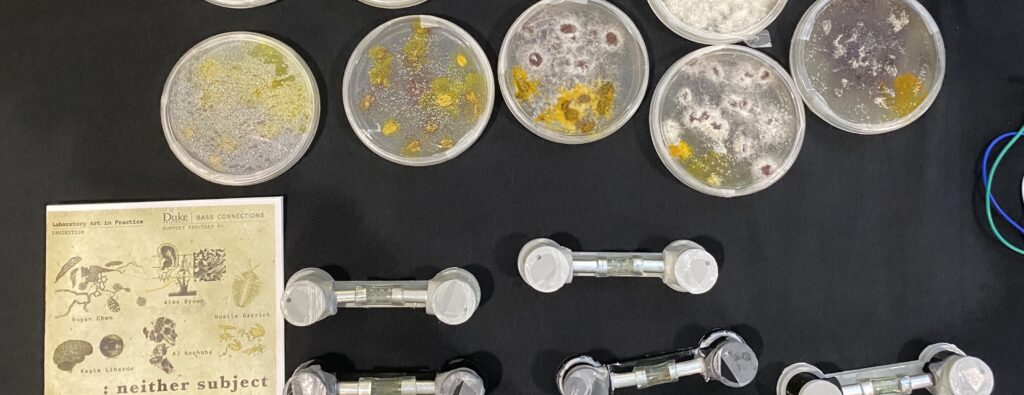
Generative Living Pixels
An Interactive Bioart Project Using Slime Mold’s Memristive Properties to Transform Human-Drawn Pixel Art Into Dynamic Visual Output
TEAM: Ruyan Chen
MY JOB: Grow Slime Mold, Circuitry, Coding, Interaction Design, 3D Modeling & Printing
TOOLS: Slime Mold, Microcontroller, CircuitPython, P5.js, Houdini, 3D Printer
PROJECT OVERVIEW
Inspired by the BioComputer Music work by scholars Eduardo Miranda and Edward Braund, Generative Living Pixels involves mapping RGB values of human-drawn pixelated paintings into voltage, applying voltage to slime mold which function as a bio-memristor that introduces randomness, reading and mapping output current back to RGB values to create an output that cannot be predicted.
CONCEPT & INSPIRATION
The concept for this project is inspired by the groundbreaking research of Professor Eduardo Miranda and his colleagues, as detailed in papers such as “A Nonlinear Approach to Generate Creative Data using Physarum polycephalum-based Memristors” and “BioComputer Music: Generating Musical Responses with Physarum polycephalum-Based Memristors.” These works detail that the memristive properties of slime mold enables it to remember the history of charge it is being applied and alter its resistance as a function of the previous charge that has flown through it. They explore the use of this property to create a bio music composer, highlighting the potential of integrating biological systems into creative processes.
We are in an era of burgeoning AI-generated content (AIGC) and generative media, which are expanding our creative potential by enabling new forms of artistic expression. I’m interested to find out how the memristive properties of slime mold can offer another avenue for exploration in this space.
OBJECTIVES
- To utilize the memristive properties of slime mold in generating creative visual output.
- To reconsider the intrinsic roles that living organisms, in this case, the slime mold, play in our technological and creative expressions.
- To explore the potential of the collaboration between human creators and non-human living organisms in creative processes.
PROCESS & METHODOLOGY
Fabrication of 3D Printed Receptacles
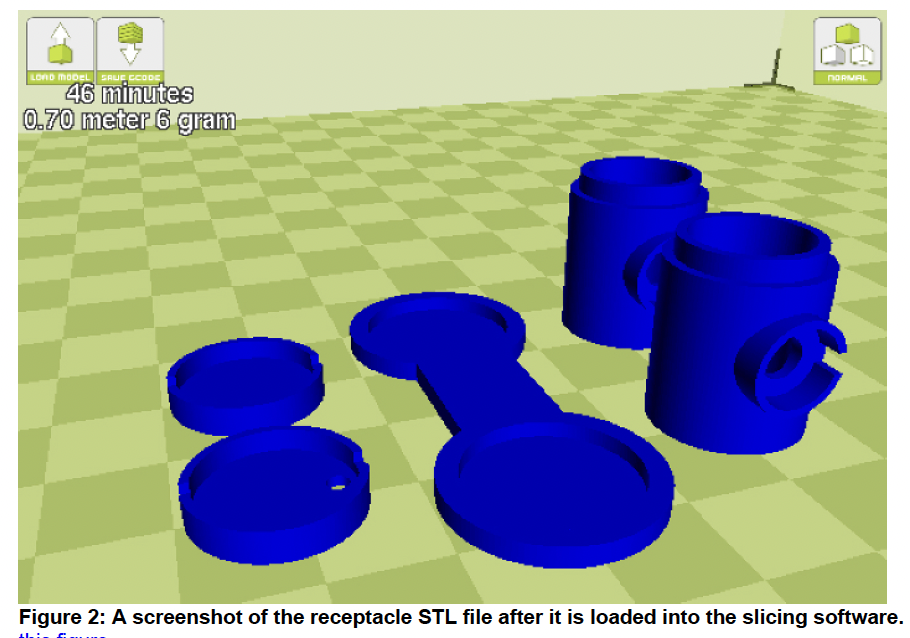


Growing Slime Mold




Circuitry
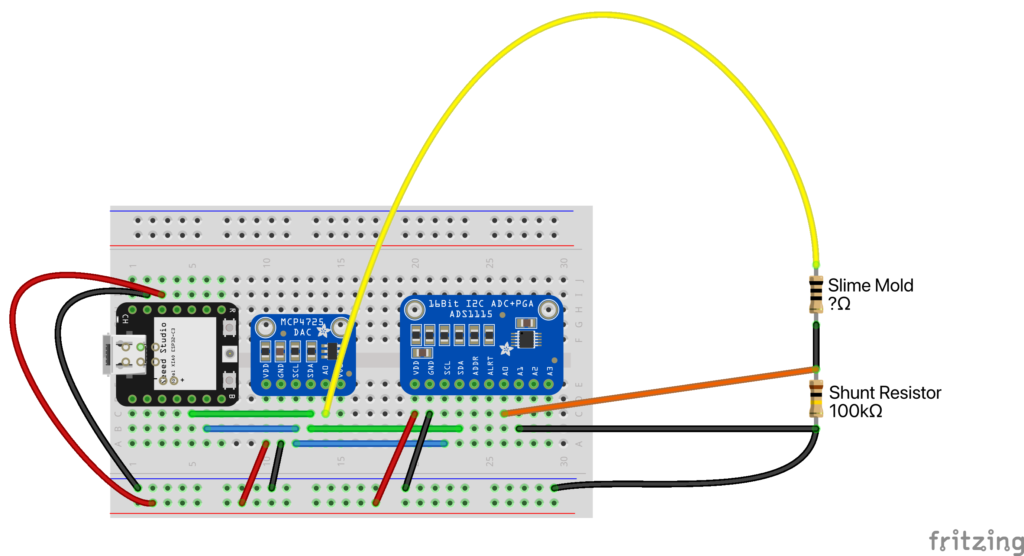
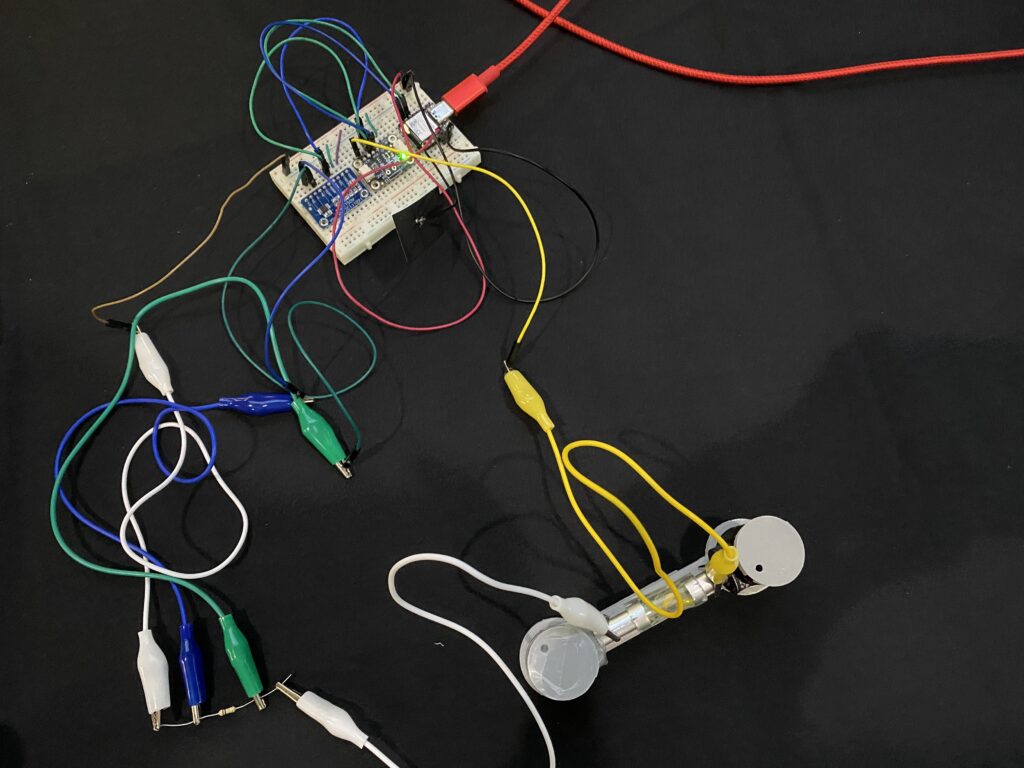
Building Interaction Interface
To achieve the objective of exploring the potential of the collaboration between human creators and non-human living organisms in creative processes, I created an INTERFACE using P5.js on which the users would be able to create pixel art. Using serial communication, the RGB values of pixel drawings will be sent from P5 to the microcontroller running the CircuitPython script. Mapping procedure will then be done, which will eventually send a new set of RGB values back to P5. New pixel drawings are displayed below the original ones.
OUTCOMES
This project was exhibited in Duke University’s BASS CONNECTIONS Laboratory Art in Practice Exhibition on 23 April 2024.
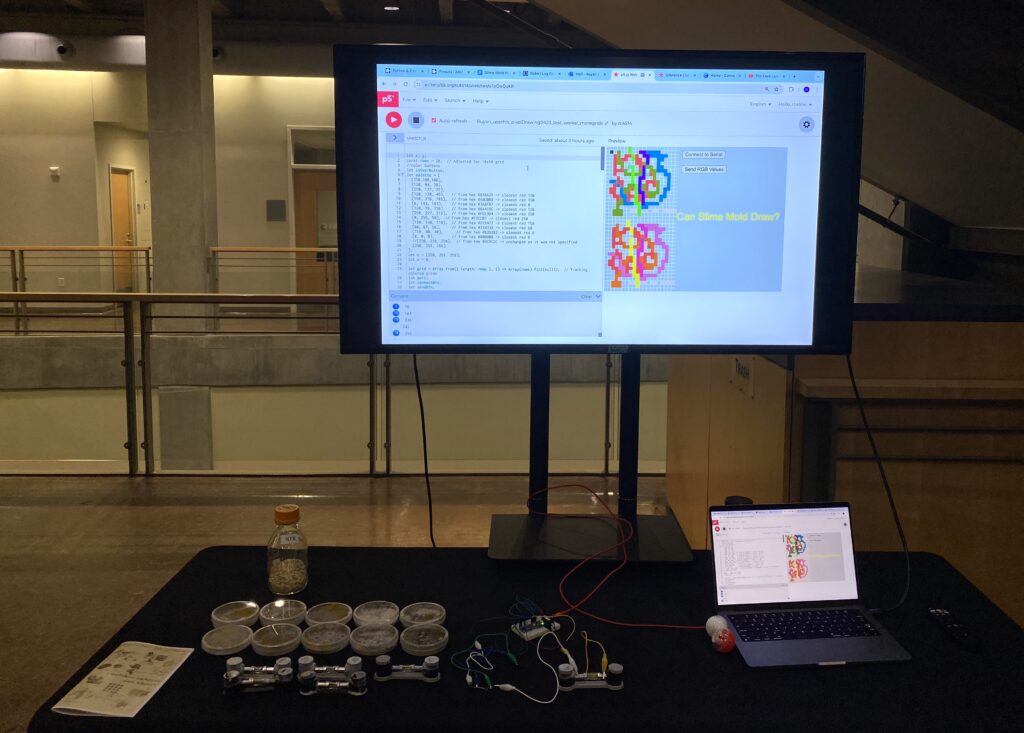
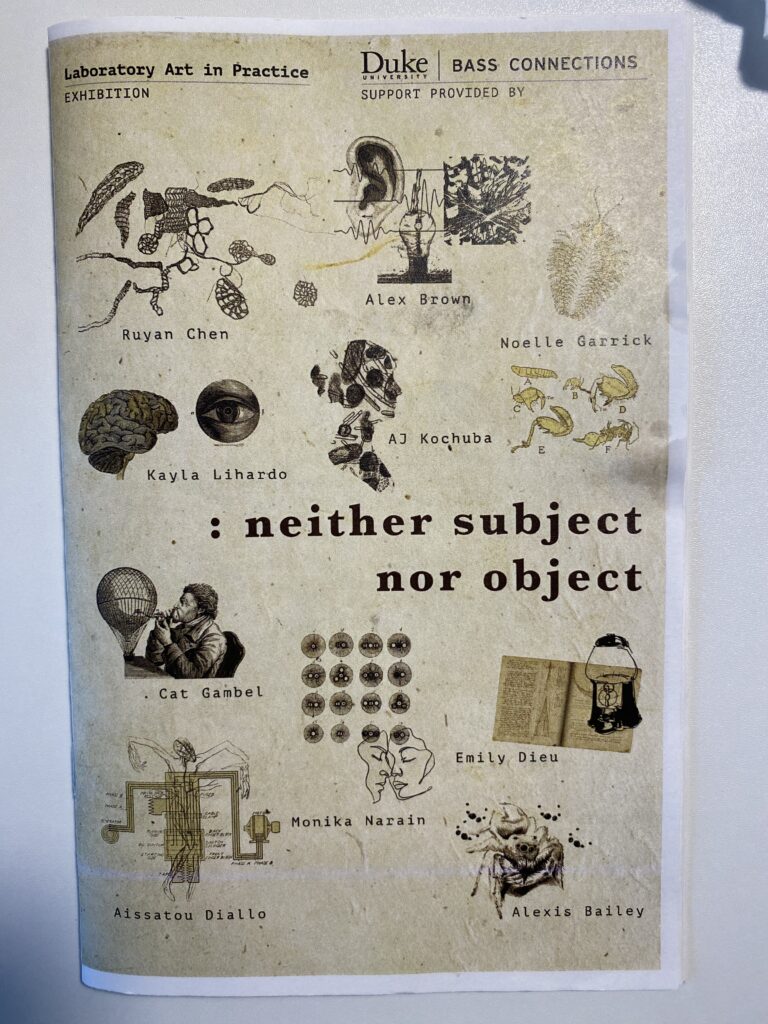




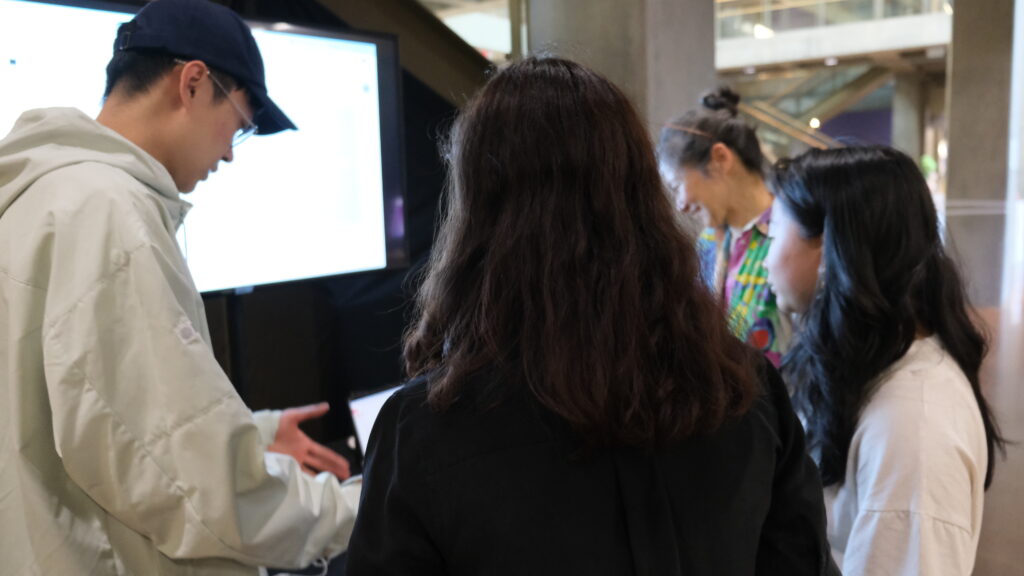

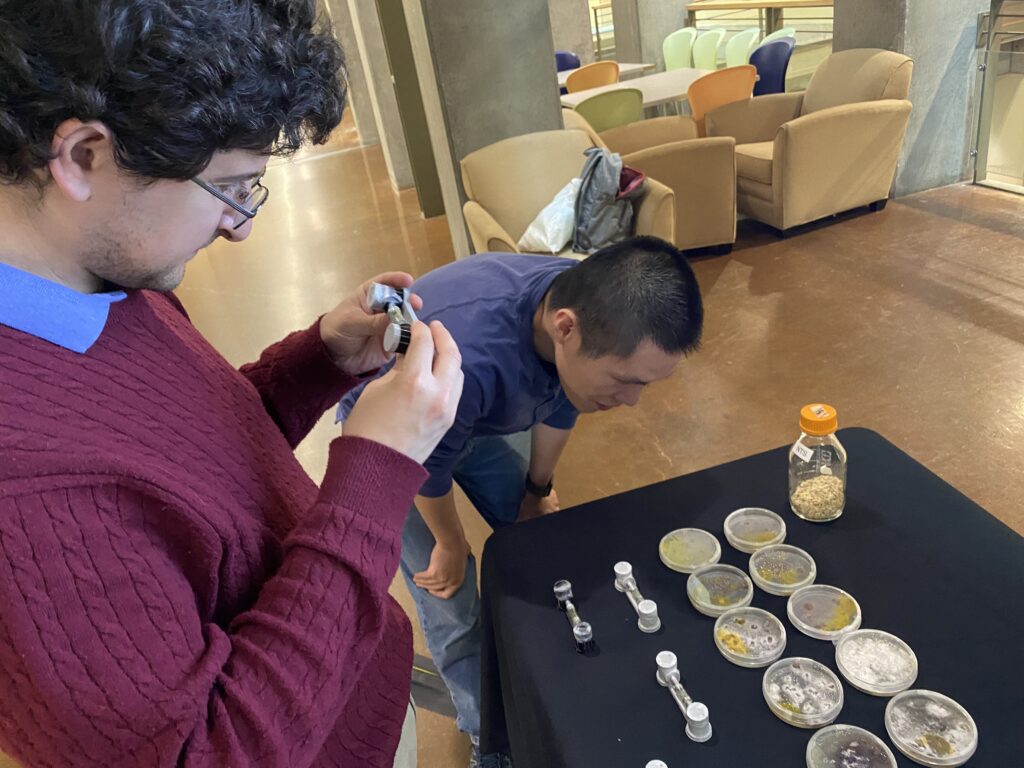
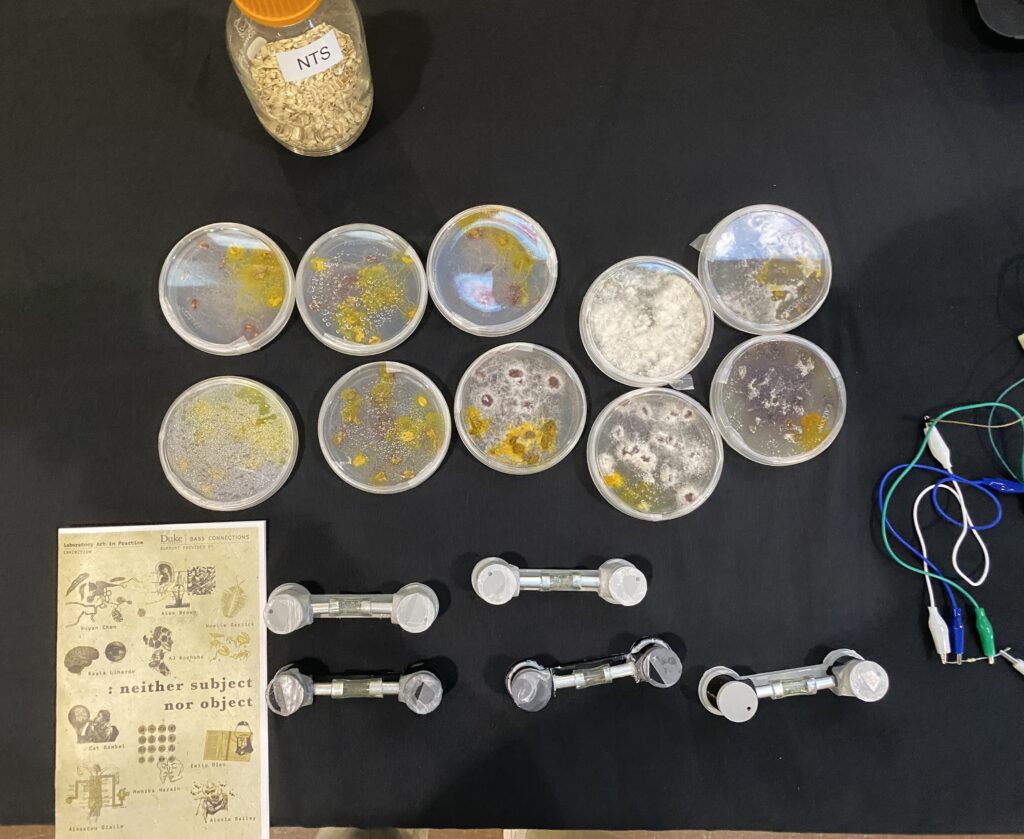


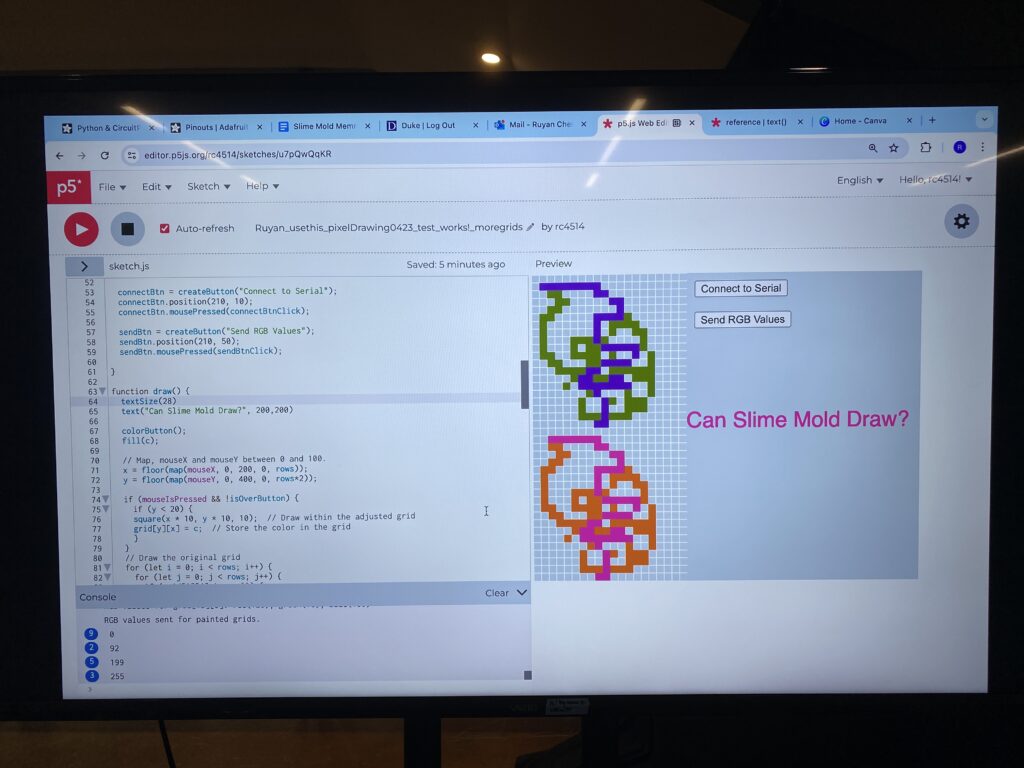
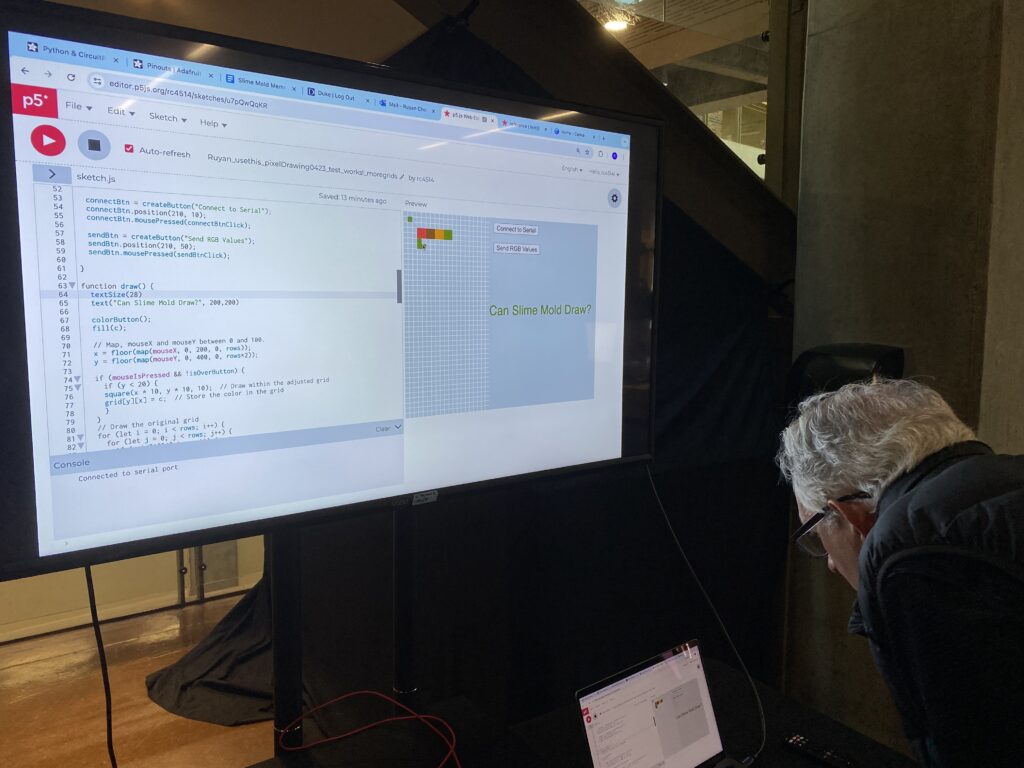
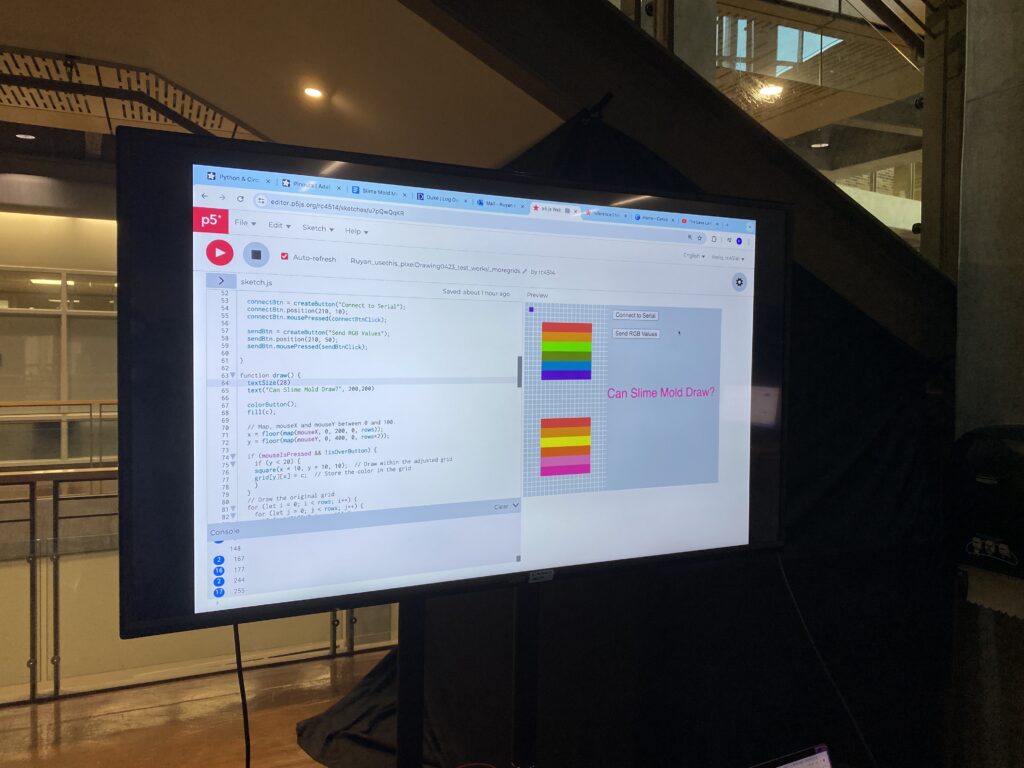

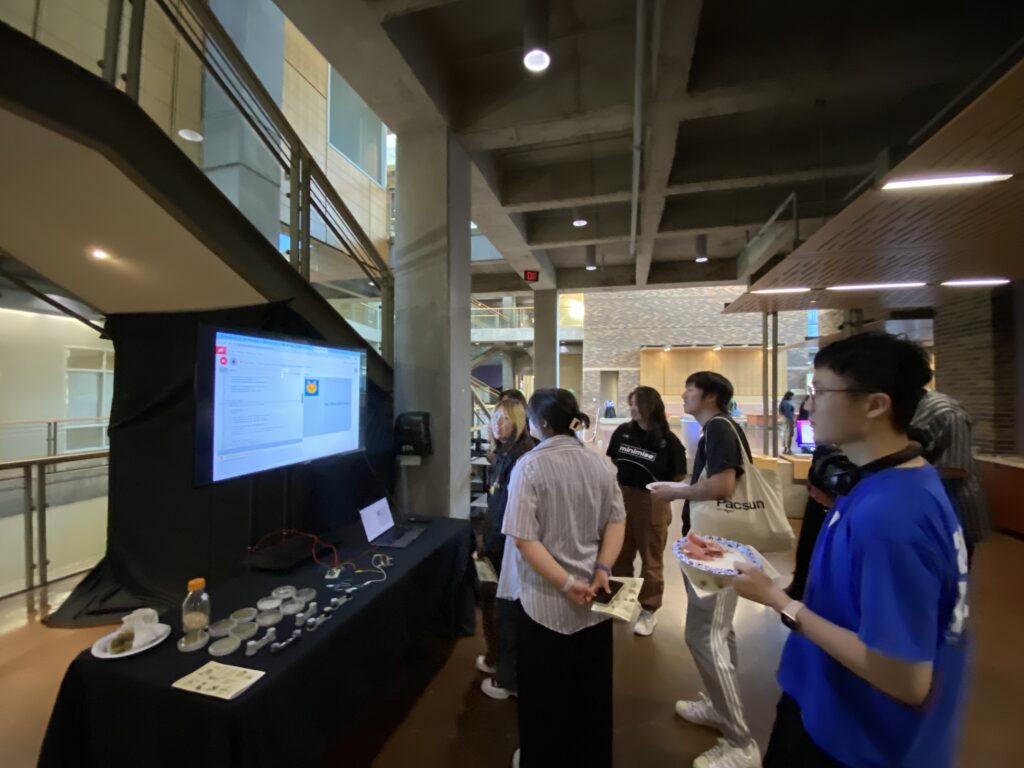
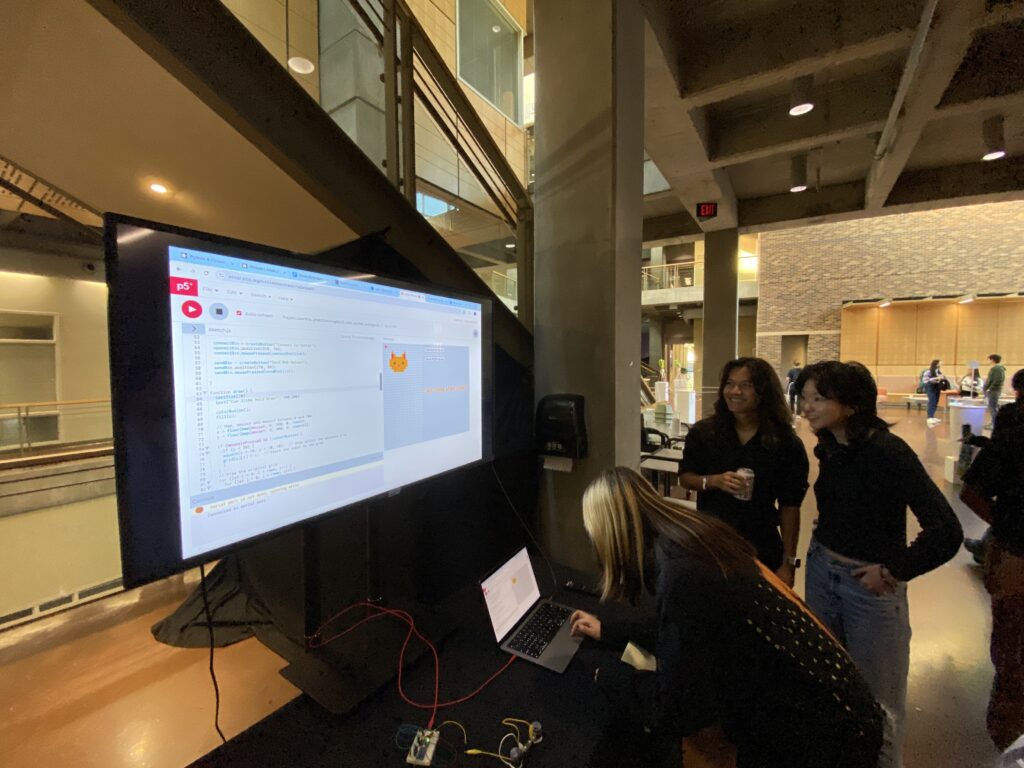

REFLECTIONS
Slime mold exhibits biological intelligence. It’s adaptive and natural. AI systems embodies artificial intelligence. It is often rule-based and constrained by human-designed logic and human-chosen data. It will be fascinating to explore the unique opportunities that emerge from leveraging and combining the capabilities of living organisms and machines.
Through co-creating with slime mold and designing circuits and scripts to harness its memristive properties, I discovered that Generative Living Pixels can serve as a platform to expand the boundaries of co-creation with living organisms. This parallels how contemporary AIGC tools are redefining co-creation with machines. By enabling users to modify and shape the generative system—determining how its memristive properties are utilized—anyone can become a creator.
GALLERY
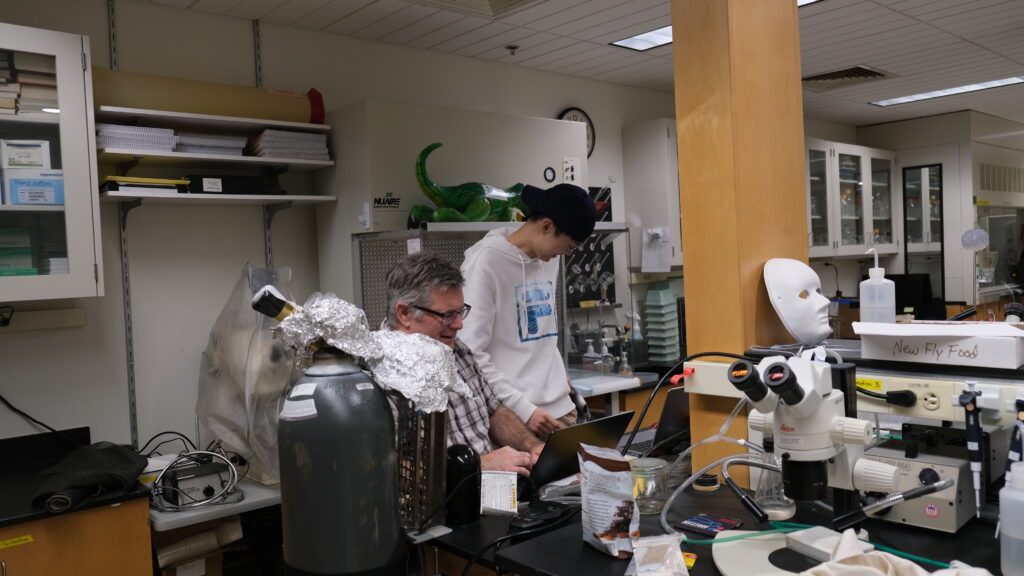

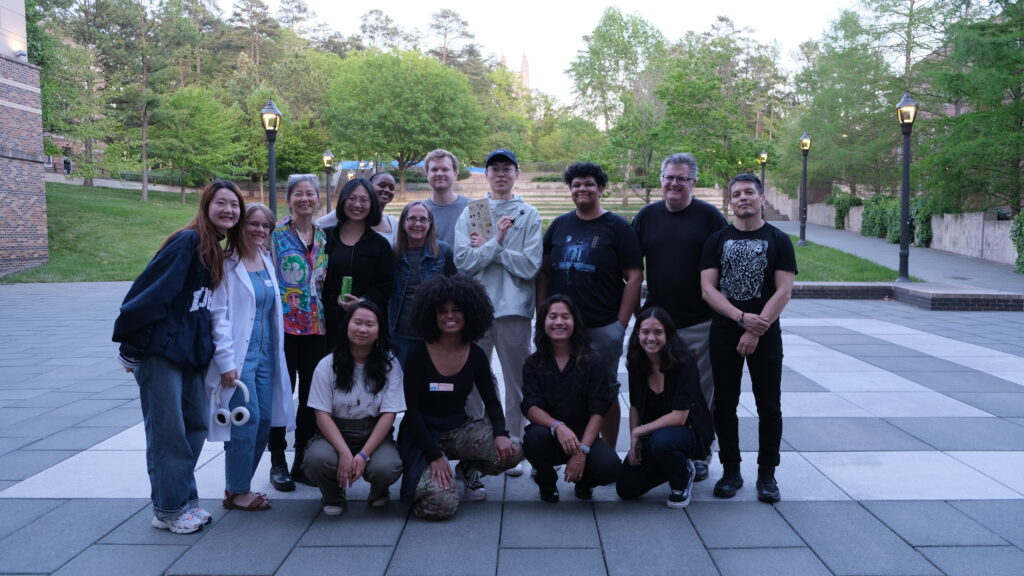

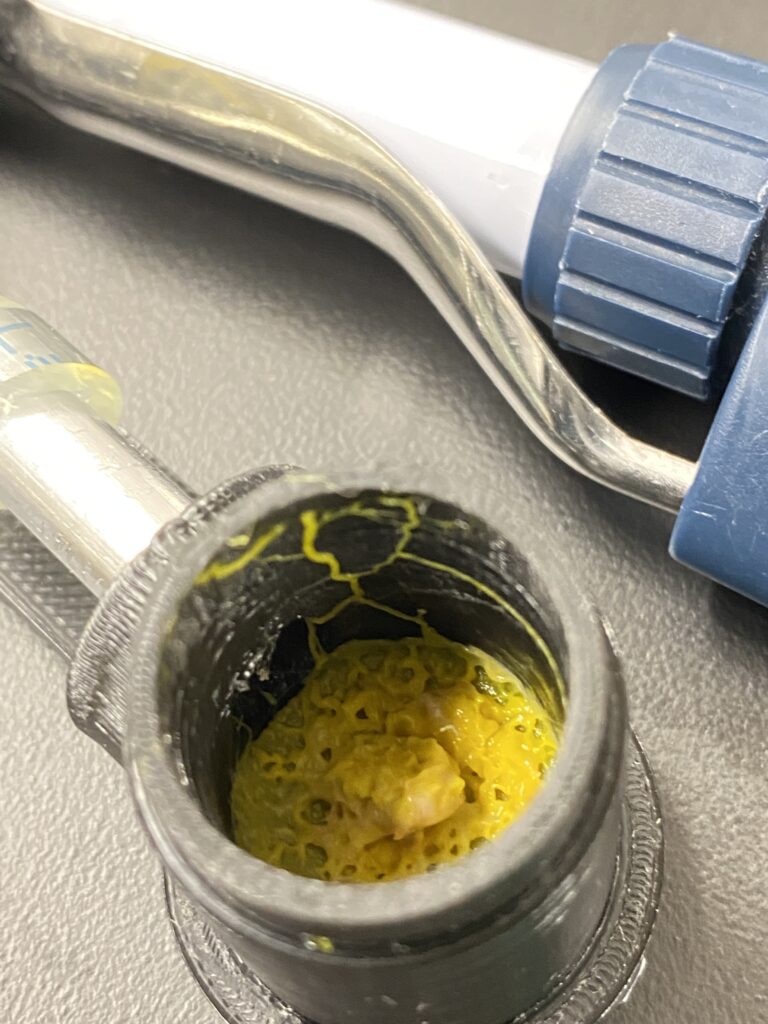

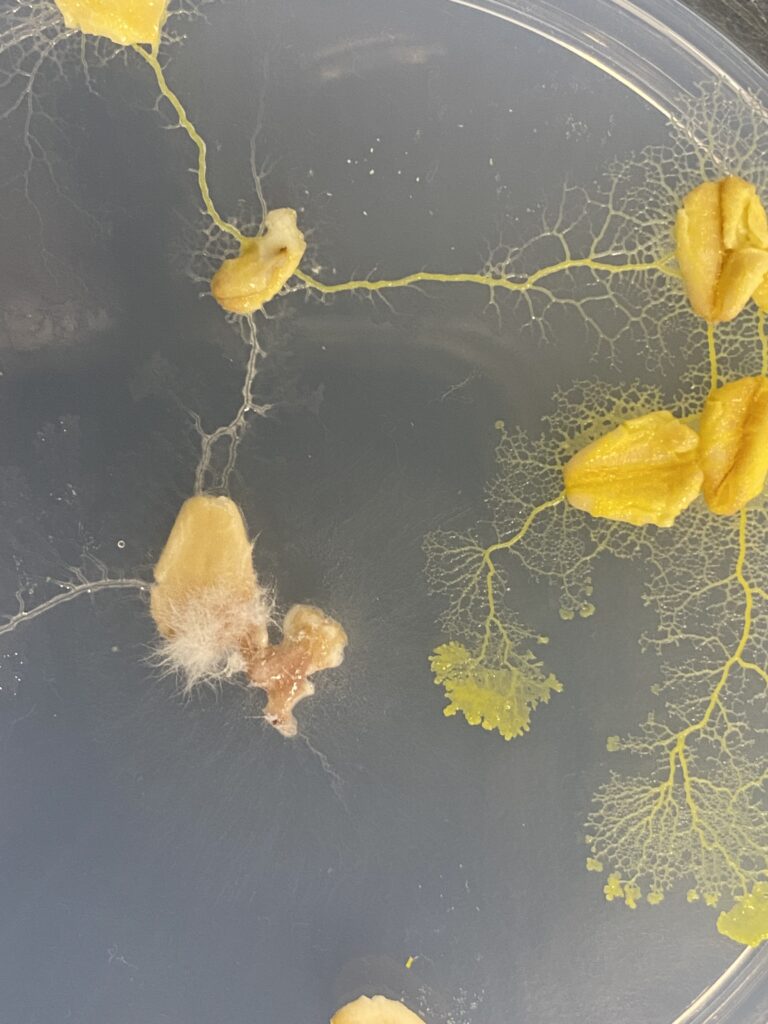

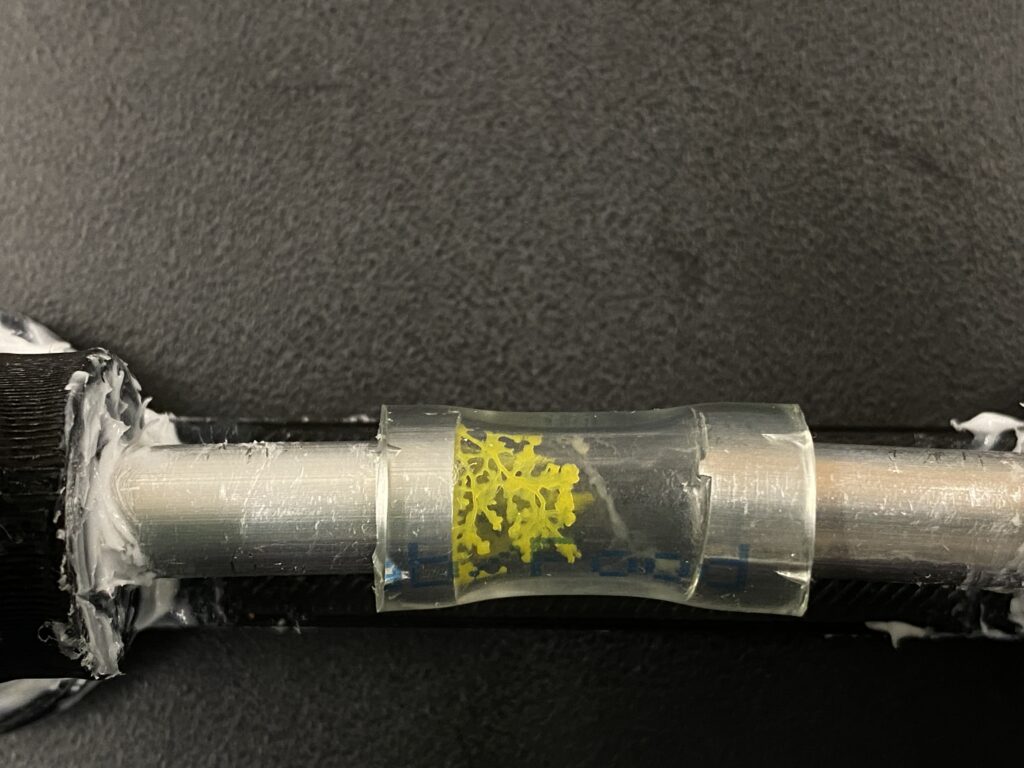
ACKNOWLEDGEMENT
This project was made possible thanks to the guidance of Professor Mark Olson. Special thanks as well to Professor Nina Sherwood, Lab Manager Kathleen Miglia, Teaching Assistant Ze-Yi and Hugo for their invaluable support.